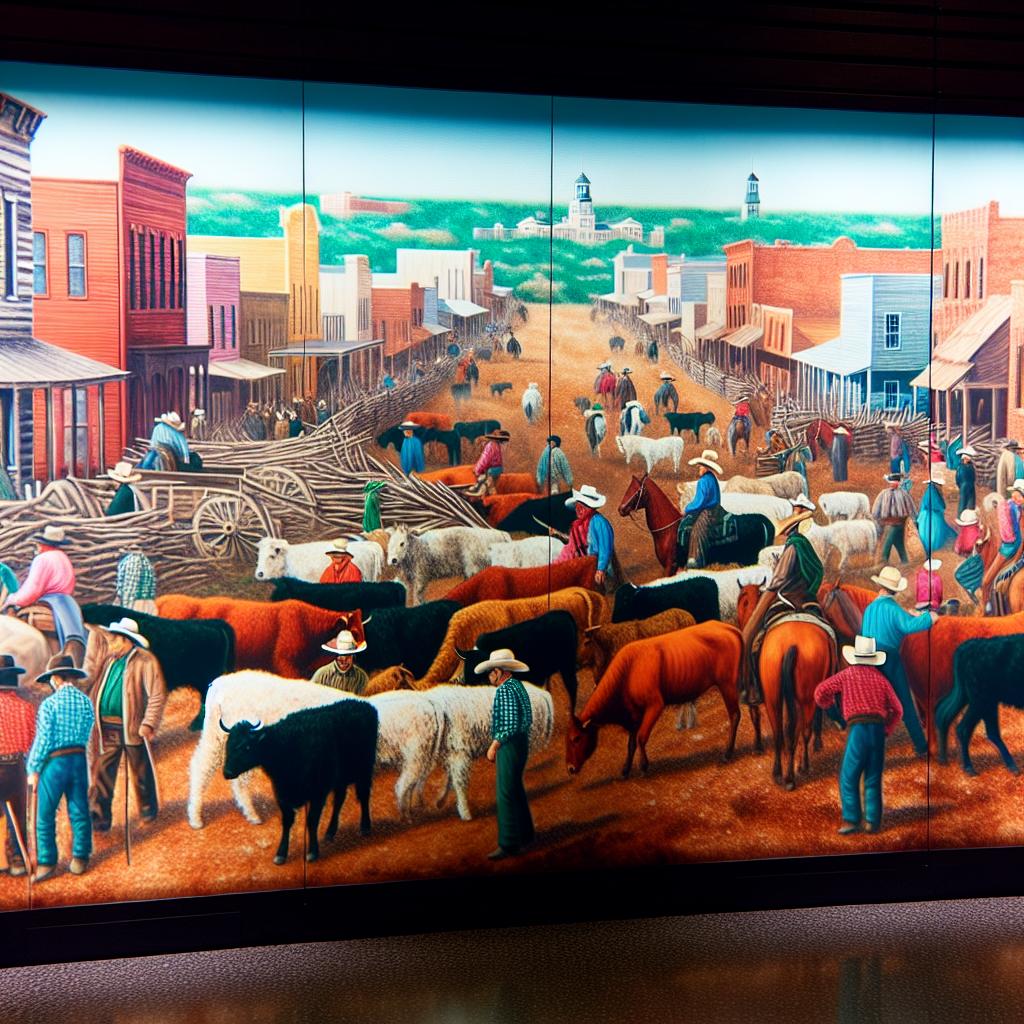The Chisholm Trail: A Brief Overview
The Chisholm Trail was a key component in the expansion of the American cattle industry during the late 19th century. Used for driving cattle from ranches in Texas to railheads in Kansas, the trail was named after Jesse Chisholm, a trader of Scottish-Cherokee descent. Originating around the Rio Grande, the trail extended approximately 800 miles. It crossed the Red River into what was then referred to as Indian Territory before reaching destinations in Kansas.
Origins and Construction
In the mid-1860s, Jesse Chisholm established the trail to support his burgeoning trading business. Initially, the trail served commercial purposes, allowing for the exchange of goods and services with various Native American tribes residing in the region. The first significant cattle drives on this trail began around 1867, concurrent with the opening of the Kansas Pacific Railway in Abilene. Providing a direct transport route to northern markets, the new rail connectivity offered Texas cattlemen fresh opportunities for growth and expansion.
The Strategic Importance of the Trail
The Chisholm Trail emerged at a time when Texas cattle ranchers were searching for solutions to unlock the economic potential of their herds. Prior to the trail’s establishment, transporting cattle to northern markets was a challenging and inefficient task, given the lack of organized transport routes. With the availability of the Chisholm Trail, these challenges were alleviated, providing cattle herders an efficient and organized path to move large numbers of cattle quickly over vast distances. This opened up lucrative market opportunities previously inaccessible, substantially accelerating the viability of the cattle industry in Texas.
The Role of Wichita in the Cattle Trade
As part of the Chisholm Trail’s strategic route, Wichita, Kansas, became an indispensable hub in the cattle trade network. Due to its advantageous position, Wichita transformed into a pivotal transshipment point where cattle were loaded onto trains destined for Eastern markets. This booming role in the cattle industry brought economic prosperity to the city, encouraging a wide range of ancillary businesses to spring up, including saloons, restaurants, and hotels. These establishments were essential in catering to the diverse needs of cowboys, cattle barons, and traders passing through.
The Impact on Wichita’s Growth
The rippling effects of the cattle trade catalyzed an impressive growth spurt in Wichita during the latter half of the 19th century. The city saw a substantial increase in its population as it evolved into a vibrant hub of commerce and trade. The economic diversity ignited by the Chisholm Trail not only attracted new settlers but also encouraged significant infrastructural developments. By the 1870s, Wichita became recognized as one of the leading cattle markets in the United States, garnering national attention for its role in shaping the cattle industry.
Decline of the Trail
Despite the trail’s profound impact, its significance began to dwindle by the mid-1870s. Several converging factors facilitated this decline. Notably, the expansion of railroad networks into Texas presented an alternative that rendered long cattle drives less essential. Furthermore, technological advancements such as the advent of barbed wire improved ranchers’ ability to manage and contain cattle more efficiently. This meant that open-range cattle drives, a hallmark of the era, saw reduced dependence, further diminishing the need for the Chisholm Trail.
The Transition to Modern Ranching
As railroads spread their networks deeper into the heart of Texas, ranching practices adapted to incorporate more modern methods of cattle management and transportation. The use of rail transport provided a swifter, more convenient way to access remote markets without subjecting cattle to long and arduous drives. Additionally, the implementation of barbed wire played a crucial role in demarcating property boundaries and managing cattle more effectively, leading to a transformation in ranching operations across the region.
Legacy of the Chisholm Trail
Although its prominence was relatively short-lived, the Chisholm Trail left an indelible legacy that resonates throughout both Wichita and the broader scope of the American cattle industry. It served as a catalyst that significantly accelerated the post-Civil War cattle boom, fostering economic development in numerous areas tied to the industry. Beyond its immediate impact, the trail contributed richly to Western culture and mythology, leaving behind a storied narrative that continues to inspire and influence. Even today, the trail’s lasting heritage is echoed in various museums and preservation initiatives along its historic route, offering insights into the era’s significant contributions.
For more comprehensive details about the Chisholm Trail, consider visiting the Official Chisholm Trail website, where you can delve deeper into its history and influence. Additionally, local museums dedicated to chronicling the history of the American West provide valuable educational resources and exhibits to explore.

